THE
LAST
DROP
THE
LAST
DROP
Operation Varsity,
March 24-25, 1945
STEPHEN L.WRIGHT



This book is dedicated to the men of the British 6th and U. S. 17th Airborne Divisions, and to those who delivered them to their drop zones and landing zones.
CONTENTS
ix
Xi
CHAPTER 1
CHAPTER 2 13
CHAPTER 3 23
CHAPTER 4 41
CHAPTER 5 53
CHAPTER 6 77
CHAPTER 7 135
CHAPTER 8 213
CHAPTER 9 243
CHAPTER 10 273
PREFACE
 'hen Kevin Shannon and I wrote One Night in June (Crowood, 2000), we told the story of Operation Tonga, the initial assault by the British 6th Airborne Division into Normandy, through the eyes of those who were there. We used only enough of our own words as were necessary to allow the narrative to flow.
'hen Kevin Shannon and I wrote One Night in June (Crowood, 2000), we told the story of Operation Tonga, the initial assault by the British 6th Airborne Division into Normandy, through the eyes of those who were there. We used only enough of our own words as were necessary to allow the narrative to flow.
The story of Operation Varsity has been briefly told within a few books. Only one has been dedicated entirely to what still remains the largest single-lift airborne operation in history. That book, Die Luftlandung and das Kriegsende im Gebiet der Stddte Hamminkeln and Wesel (1997) by Johann Nitrowski, has not been translated into English, however.
My aim with this book was to use the same anecdotal format as in One Night in June. To that end, I have received more than fifty accounts from American, British, and Canadian veterans and been granted permission to use others published in books. The men who wrote the accounts were paratroopers, gliderborne troops, glider pilots, RAF and troop carrier crews, and war correspondents. Their words add poignancy and vividness to the account of this operation. Veterans from both sides of the Atlantic have given me much encouragement to write the book. For those veterans of the 17th Airborne Division, I have a particular gratitude. Several of them have told me how tired they are of having to tell people that they did see combat-in the hell of the Ardennes and then in the Rhineland. As far as possible, I have compared and contrasted the words of eyewitnesses with those of others and also with the official pre- and postoperation reports.
In certain cases, the actions of some units are described in more detail than others. I would have liked to have given the same consideration to all units but was prevented from doing so because reports or personal accounts for some units do not exist or have been unobtainable. Where greater detail does exist, this was generally made possible by contributors who supplied unit reports as well as their own accounts. Unless otherwise stated, all quotes are from personal accounts that I received.
This book begins with chapters on planning, training, and getting airborne for the operation, after which the experiences of each division on 24 March have been separated into two sections, with the order of the narrative following that in which the various divisional units landed. The divisions worked largely in isolation, although there were both planned and unplanned linkups. I have therefore chosen this method of relating the events in an attempt to add clarity to the story and to paint a picture of each division's endeavors. Finally, the actions of both divisions on 25 March are brought together in one chapter.
Operation Varsity was the result of many months of planning and involved the delivery behind enemy lines of two airborne divisions. In one day, two Medals of Honor, a Victoria Cross and the British Army's first and only Conspicuous Gallantry Medal were won.
ACKNOWLEDGMENTS

 - y thanks, first of all, to the veterans and relatives who have pro.vided personal accounts of the operation: Ronald "Andy" Anderson, Edgar Bartlett, Charlie Bentley (for his father's story), Everett Bullard, Norbert Burger, Bob Butcher, Denis Cason, John Chester, Capt. Hugh Clark MC, Harry Clarke, Simon Cooper (for his grandfather's account), Michael Corboy, Jake Dalton, Ellis "Dixie" Dean,Thomas E. Denham, Jan de Vries, Eugene G. Dickens, Richard Dunkley, Ted Eaglen MM, Patrick Edmonds, Denis Edwards, Jack Finch, Charles O. Gordon, Michael Ham, H. G. "Sam" Hardy, Andrew Harper (for his father's account), Bill Highfill, Howard Holloway, Irvin Holtan, Eugene Howard, Stan Jarvis MBE, John Johnson, John Kern, Joe Kitchener, John G. Kormann, Brian Lathan, Clive Laurence-Peckham (for his father's account), Tony Leake,John Love DFC, Bill Lusk, Dr. John Magill Jr., Steve Marande (for his father's account), Robert W. Mortimer, Robert F. Nicholls, George Nye, John O'Grady, William O'Rourke, Des Page, Bob Patterson, Gordon Procter, James "Joe" Rheinberger, William R. Scurlock, Arthur Shackleton, Mrs. Barbara Slater (for her husband's account), Alan Stredwick, James E. "Jimmy" Taylor, George Theis, David Tibbs MC, Bill Tom, Vespucci B. "Butch" Traini, Barend "Barry" Volkers, Fred Waggett, Toth Wallis, Ken Ward, Peter Young, and Louis J. Zoghby.
- y thanks, first of all, to the veterans and relatives who have pro.vided personal accounts of the operation: Ronald "Andy" Anderson, Edgar Bartlett, Charlie Bentley (for his father's story), Everett Bullard, Norbert Burger, Bob Butcher, Denis Cason, John Chester, Capt. Hugh Clark MC, Harry Clarke, Simon Cooper (for his grandfather's account), Michael Corboy, Jake Dalton, Ellis "Dixie" Dean,Thomas E. Denham, Jan de Vries, Eugene G. Dickens, Richard Dunkley, Ted Eaglen MM, Patrick Edmonds, Denis Edwards, Jack Finch, Charles O. Gordon, Michael Ham, H. G. "Sam" Hardy, Andrew Harper (for his father's account), Bill Highfill, Howard Holloway, Irvin Holtan, Eugene Howard, Stan Jarvis MBE, John Johnson, John Kern, Joe Kitchener, John G. Kormann, Brian Lathan, Clive Laurence-Peckham (for his father's account), Tony Leake,John Love DFC, Bill Lusk, Dr. John Magill Jr., Steve Marande (for his father's account), Robert W. Mortimer, Robert F. Nicholls, George Nye, John O'Grady, William O'Rourke, Des Page, Bob Patterson, Gordon Procter, James "Joe" Rheinberger, William R. Scurlock, Arthur Shackleton, Mrs. Barbara Slater (for her husband's account), Alan Stredwick, James E. "Jimmy" Taylor, George Theis, David Tibbs MC, Bill Tom, Vespucci B. "Butch" Traini, Barend "Barry" Volkers, Fred Waggett, Toth Wallis, Ken Ward, Peter Young, and Louis J. Zoghby.
For providing tireless support, as well as answering numerous questions and queries, my thanks go to Denis Edwards, Randy Hils, Michael Ingrisano, Tony Leake, and Joe Quade. Several authors graciously allowed me to quote from their books: George F. Cholewczynski, Peter Harclerode, Randy Hils, Michael Ingrisano, Patrick K. O'Donnell, and Ron Tucker. My thanks also to George Stefanski and Bonnie Hicks, from the Airborne and Special Forces Museum in Fayetteville, North Carolina; the Reading Room staff at the National Archives, Kew, Richmond, and Lt. Col. Derek Armitage at the Museum of Army Flying, Middle Wallop; Chris Anderson, Editor of World War II magazine, for Frank J. O'Rourke's account; the BBC for permission to use the reports of Richard Dimbleby and Stanley Maxted; David Brook for permission to quote from The Eagle; Charles O. Gordon for permission to quote from his report; and Capt. J. Knox (Retd.) for permission to quote from the Royal Ulster Rifles' History.

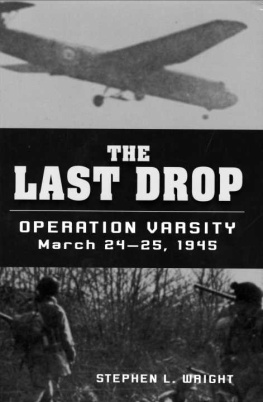
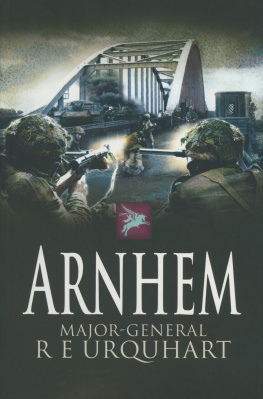
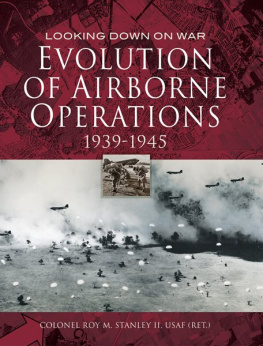

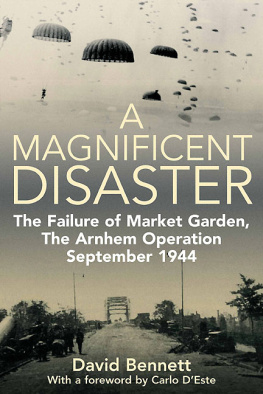
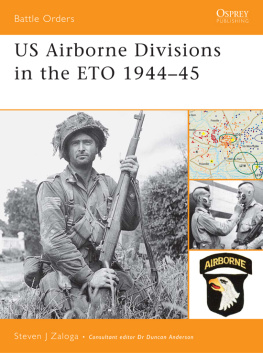
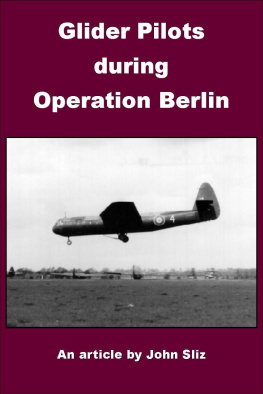

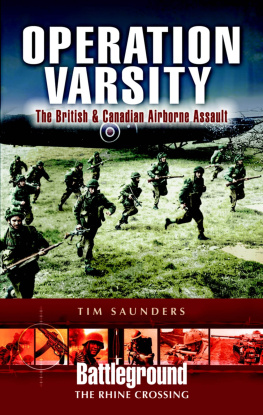
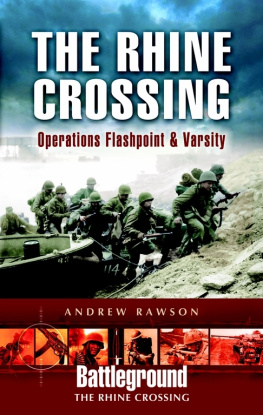
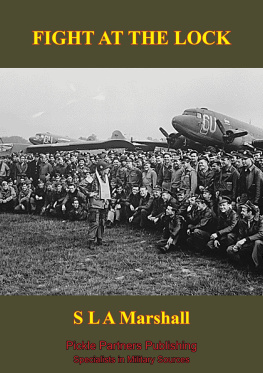











 'hen Kevin Shannon and I wrote One Night in June (Crowood, 2000), we told the story of Operation Tonga, the initial assault by the British 6th Airborne Division into Normandy, through the eyes of those who were there. We used only enough of our own words as were necessary to allow the narrative to flow.
'hen Kevin Shannon and I wrote One Night in June (Crowood, 2000), we told the story of Operation Tonga, the initial assault by the British 6th Airborne Division into Normandy, through the eyes of those who were there. We used only enough of our own words as were necessary to allow the narrative to flow.

 - y thanks, first of all, to the veterans and relatives who have pro.vided personal accounts of the operation: Ronald "Andy" Anderson, Edgar Bartlett, Charlie Bentley (for his father's story), Everett Bullard, Norbert Burger, Bob Butcher, Denis Cason, John Chester, Capt. Hugh Clark MC, Harry Clarke, Simon Cooper (for his grandfather's account), Michael Corboy, Jake Dalton, Ellis "Dixie" Dean,Thomas E. Denham, Jan de Vries, Eugene G. Dickens, Richard Dunkley, Ted Eaglen MM, Patrick Edmonds, Denis Edwards, Jack Finch, Charles O. Gordon, Michael Ham, H. G. "Sam" Hardy, Andrew Harper (for his father's account), Bill Highfill, Howard Holloway, Irvin Holtan, Eugene Howard, Stan Jarvis MBE, John Johnson, John Kern, Joe Kitchener, John G. Kormann, Brian Lathan, Clive Laurence-Peckham (for his father's account), Tony Leake,John Love DFC, Bill Lusk, Dr. John Magill Jr., Steve Marande (for his father's account), Robert W. Mortimer, Robert F. Nicholls, George Nye, John O'Grady, William O'Rourke, Des Page, Bob Patterson, Gordon Procter, James "Joe" Rheinberger, William R. Scurlock, Arthur Shackleton, Mrs. Barbara Slater (for her husband's account), Alan Stredwick, James E. "Jimmy" Taylor, George Theis, David Tibbs MC, Bill Tom, Vespucci B. "Butch" Traini, Barend "Barry" Volkers, Fred Waggett, Toth Wallis, Ken Ward, Peter Young, and Louis J. Zoghby.
- y thanks, first of all, to the veterans and relatives who have pro.vided personal accounts of the operation: Ronald "Andy" Anderson, Edgar Bartlett, Charlie Bentley (for his father's story), Everett Bullard, Norbert Burger, Bob Butcher, Denis Cason, John Chester, Capt. Hugh Clark MC, Harry Clarke, Simon Cooper (for his grandfather's account), Michael Corboy, Jake Dalton, Ellis "Dixie" Dean,Thomas E. Denham, Jan de Vries, Eugene G. Dickens, Richard Dunkley, Ted Eaglen MM, Patrick Edmonds, Denis Edwards, Jack Finch, Charles O. Gordon, Michael Ham, H. G. "Sam" Hardy, Andrew Harper (for his father's account), Bill Highfill, Howard Holloway, Irvin Holtan, Eugene Howard, Stan Jarvis MBE, John Johnson, John Kern, Joe Kitchener, John G. Kormann, Brian Lathan, Clive Laurence-Peckham (for his father's account), Tony Leake,John Love DFC, Bill Lusk, Dr. John Magill Jr., Steve Marande (for his father's account), Robert W. Mortimer, Robert F. Nicholls, George Nye, John O'Grady, William O'Rourke, Des Page, Bob Patterson, Gordon Procter, James "Joe" Rheinberger, William R. Scurlock, Arthur Shackleton, Mrs. Barbara Slater (for her husband's account), Alan Stredwick, James E. "Jimmy" Taylor, George Theis, David Tibbs MC, Bill Tom, Vespucci B. "Butch" Traini, Barend "Barry" Volkers, Fred Waggett, Toth Wallis, Ken Ward, Peter Young, and Louis J. Zoghby.